- Home
- Alice Walker
We Are the Ones We Have Been Waiting For Page 7
We Are the Ones We Have Been Waiting For Read online
Page 7
And so I laughed. The laughter bubbled up, irrepressible. I saw the path to happiness and to liberation at a glance. It was inside myself.
Now I understand that all great teachers love us. This is essentially what makes them great. I also understand that it is this love that never dies, and that, having once experienced it, we have the confidence always exhibited by well-loved humans, to continue extending this same love. The Buddha, presumably raised as a Hindu, was no doubt disheartened by its racism, i.e., the caste system that today blights the lives of one hundred and sixty million Indians. Indians who were once called “untouchables” and now call themselves Dalits, “those broken to pieces.” They are not allowed to own land. They cannot enter the same doors, attend the schools, or drink from the same wells, as the so-called “higher” castes. Their shadow must never fall on those above them. They are brutalized and the women raped at will. Niggers of India, they are.
Traditionally it is taught that the Buddha discovered someone old, someone sick and someone dying, after having lived a very sheltered life, and that because of this suffering, inherent to all humankind, he struck out into the world to find a remedy. There’s no mention, usually, of the horrible caste system, everywhere in place in his area, which I personally find impossible to imagine the Buddha ignoring.
I like to think of the young prince, Siddartha, observing this hypocrisy of his native religion, perhaps touching or loving an “untouchable,” and deciding there had to be a better way. A higher truth. I like to think of him leaving his cushy home and delightful family, his loving wife and adorable son, and striking out into the wilderness. Searching for a way humans could rid themselves of the hideous affliction of spirit that forced division and degradation of part of the human family imposes.
Which is to say, I felt the Buddha’s spirit long before I began to study his words. I felt him not as a god or as the son of a god but as a human being who looked around, as any of us might do, and said to himself: Something here is very wrong. People are such beautiful and wondrous creations, why are they being tortured? What have they done that this should be so? How can there be an end to their suffering?
The Buddha sat down.
Most of the representations of the Buddha show him sitting down. Sometimes he is lying down. Sometimes he is walking, though this is rare. Sometimes he is shown leaping to his feet and flinging up his arms in joy. Anyone who meditates recognizes these states. First, the sitting. The concentration on the breath. Sometimes the lying down, feeling our connection to the Mother, the great support of Earth. There is the walking, which integrates our bodies with our mind state. Then there is the feeling of exuberance when we realize we have freed ourselves. Again.
How does this happen?
I imagine there are people who turn to the Buddha because they’ve lost a lot of money. My experience, however, is that almost everyone I’ve met that has turned to the Buddha did so because they have suffered the end of a love affair. They have lost someone they loved. Perhaps they have lost a country, as well, or parents or siblings or some function of their bodies. But very often, people turn to the Buddha because they have been carried so deeply into their suffering by the loss of a loved one that without major help they fear they will never recover. (I actually love this about Buddhists: that though their reputation is all about suffering and meditating and being a bit low-key sexually and spiritually languid, they are in fact a band of hopeful lovers who risk their hearts in places a Methodist would rarely dare to tread.)
This is what happened to me. I had lost my own beloved. The pain of this experience seemed bottomless and endless. Enter my teacher for that moment of my life, the Buddhist nun Pema Chodron and her teachings on a set of tapes called Awakening Compassion. Under her guidance, far in the country away from everyone, on my own retreat of one, I learned an ancient Tibetan Buddhist meditation practice called Tonglen, along with the teachings that accompanied it, called Lojong. This involved, during meditation, learning to breathe in the pain I was feeling, not to attempt to avoid or flee it. It involved making my heart bigger and bigger just to be able to hold it all. It involved breathing out relief and happiness for myself and for everyone on Earth who was feeling as miserable as I was. I stayed at this practice for a year.
It worked.
So that today I sometimes wonder what my suffering over the loss of a loved one was really about. And I have almost concluded that it was again the love of the Buddha reaching through two thousand and five hundred years wanting me to understand I had some control over how much suffering I endure. Wanting me to try a remedy he had found and to see for myself whether it works.
My novel The Color Purple was actually my Buddha novel without Buddhism. In the face of unbearable suffering following the assassinations and betrayals of the Civil Rights Movement, I too sat down upon the Earth and asked its permission to posit a different way from that in which I was raised. Just as the Buddha did, when Mara, the king of delusion, asked what gave him the right to think he could direct humankind away from the suffering they had always endured. When Mara queried him, the Buddha touched the Earth. This is the single most important act, to my mind, of the Buddha. Because it acknowledges where he came from. It is a humble recognition of his true heritage, his true lineage. Though Buddhist monks would spend millennia pretending all wisdom evolves from the masculine and would consequently treat Buddhist nuns abominably, the Buddha clearly placed himself in the lap of the Earth Mother and affirmed Her wisdom and Her support.
It has been enormously helpful to me to learn that the Buddha’s wife and son eventually joined him in the wilderness and that she became both a follower and a teacher. There was love between them. How I wish we had a record of her thoughts. The male effort to separate Wisdom from the realm of the Feminine is not only brutal and unattractive but it will always fail, though this may take, as with Buddhism, thousands of years. This is simply because the Feminine is Wisdom; it is also the Soul. Since each and every person is born with an internal as well as an eternal Feminine, just as everyone is born with an internal and eternal Masculine, this is not a problem except for those who insist on forcing humans into gender roles. Which makes it easier for them to be controlled.
Sometimes, as African Americans, African Indians, African Amerindians, People of Color, it appears we are being removed from the planet. Fascism and Nazism, visibly on the rise in the world, have always been our experience of white supremacy in America, and this has barely let up. Plagues such as AIDS seem incredibly convenient for the forces that have enslaved and abused us over the centuries and who today are as blatant in their attempts to seize our native homelands and their resources as Columbus was five hundred years ago. Following the suffering and exhilaration of the Sixties, a pharmacopia of drugs suddenly appeared just as we were becoming used to enjoying our own minds. “Citizen Television,” which keeps relentless watch over each and every home, claims the uniqueness and individuality of the majority of our children from birth. After the assassinations of Martin Luther King, Jr., Malcolm X, Che Guevara and so many other defenders of humanity, known and unknown, around the globe, we find ourselves in the year 2002 with an unelected president who came to office by disenfranchising black voters, just as was done, routinely, before Martin Luther King, Jr., and the rest of us were born. This is a major suffering for black people and must not be overlooked. I myself, on realizing what had happened, felt a soul sickness I had not experienced in decades. Those who wanted power beyond anything else—oil and the money to be made from oil (which is the Earth Mother’s blood)—were contemptuous of the sacrifices generations of our ancestors made. The suffering of our people, especially of our children, with their bright, hopeful eyes, is of no significance to them. George Slaughter—the surname would have been his master/father’s, and deadly accurate—was not killed, we intuit, because his “saddle horse was too fine,” he was killed because he was too fine.
This is the bind we are in.
There is a privat
e riddle I ask myself: Why did Europeans enslave us in Africa and take us to the United States?
The answer: Because we would not go voluntarily.
The African Americans who are aiding and abetting the rape and pillage of Earth, helping literally to direct the bombs that fall on the innocent and the exquisite, are still another cause of our suffering. We look into their eyes and experience a great fright. They appear so familiar, and yet, somehow, we feel they are not. I do not call their names because essentially they are, as we are, energies. And they are familiar because they have been around just as long as we have. It is also necessary to acknowledge that some of those energies we find so frightening exist within ourselves.
This poem, which I think of as one of my “bitter” poems, expresses something of their position, when they can bear to acknowledge it, throughout the long centuries:
They Helped Their Own
They helped their own
They did not
Help us
We helped
Them
Help
Themselves
Beggars
That
We are.
Underneath what is sometimes glibly labeled racism or sexism or caste-ism, there lurk covetousness, envy and greed. All these human states can, through practice, be worked with and transformed. This is the good news for our oppressors, as it is for humans generally, since we all have these qualities to a degree. The equally good news for us is that we can turn our attention away from our oppressors—unless they are directly endangering us to our faces—and work on the issue of our suffering without attaching them to it. The teaching that supports that idea is this:
Suppose someone shot you with an arrow, right in the heart. Would you spend your time screaming at the archer, or even trying to locate him? Or would you try to pull the arrow out of your heart? White racism, that is to say, envy, covetousness and greed (incredible sloth and laziness in the case of enslaving others to work for you), is the arrow that has pierced our collective heart. For centuries we have tried to get the white archer even to notice where his arrow has landed; to connect himself, even for a moment, to what he has done. Maybe even to consider apologizing, which he hates to do. To make reparations, which he considers absurd.
This teaching says: enough. Screaming at the archer is a sure way to remain attached to your suffering rather than easing or eliminating it. A better way is to learn, through meditation, through study and practice, a way to free yourself from the pain of being shot, no matter who the archer might be.
There is also the incredibly useful assurance that everything is change. Everything is impermanent. The country, the laws, the Fascists and Nazis, the archer and the arrow. Our lives and their lives. Life. Looking about at the wreckage, it is clear to all that in enslaving us, torturing us, trying to get “ahead” on the basis of our misery, our oppressors in the past had no idea at all what they were doing. They still don’t. As we practice, let this thought deeply root. From this perspective, our compassion for their ignorance seems the only just tribute to our survival.
Who or What knows what is really going on around here, anyway? Only the Tao, or Life or Creation or That Which Is Beyond Human Expression.
Sitting quietly.
This place of peace, of serenity and gratitude, does exist. It is available to all. In a way, this place of quiet and peacefulness could be said to be our shadow. Our deserved shadow. Our African Amerindian shadow. In European thought the shadow is rarely understood as positive, because it is dark, because it is frequently behind us, because we cannot see it; but for us, ultrasensitive to the blinding glare of racism and suffering daily the searing effects of incomprehensible behavior, our shadow of peace, that we so rarely see, can be thought of as welcoming shade, the shade of an internal tree. A tree that grows beside an internal river that bathes us in peace. Meditation is the path that leads to this internal glade. To share that certainty is the greatest privilege and joy.
I am grateful for the opportunity to join you in this first-ever African American Buddhist retreat in North America. Though not a Buddhist, I have found a support in the teachings of the Buddha that is beyond measure, as I have found comfort and support also in those teachings I have received from Ancient Africans and Indigenous people of my native continent and from the Earth Itself.
The teacher who has been most helpful to me, in addition to Pema Chodron, is Jack Kornfield, an extraordinary guide and human being, whose books and tapes, among them A Path with Heart, After the Ecstasy the Laundry, and The Roots of Buddhist Psychology, I would recommend to anyone who seeks a better understanding of the Enspirited Life; Sharon Saltzberg’s book Loving-Kindness, The Revolutionary Art of Happiness has been an incomparable gift. Recently, in a book called Knee Deep in Grace, I discovered the teachings of the Indian female yogi, householder and mother Dipa Ma. Her instructions and observations seem endlessly potent.
I am deeply grateful to all the teachers who came before these four that I have mentioned. Teachers from Vietnam (Thich Nhat Hahn has been a beloved teacher) Thailand, Burma, India, China and especially Tibet. I thank the Dalai Lama for allowing himself to be a symbol of good in a world that seems, at times, hopelessly tilted toward evil. I thank Martin Luther King, Jr. for the warm, brotherly touch of his hand when I was young and seeking a way to live, with dignity, in my native land in the South. And for the sound of his voice, which was so full of our experience. I thank him for loving us. If he had been able to live and teach, as the Buddha did, until the age of eighty, how different our world would be. It is such a gift to have his books and recordings of his words; and to be able to understand his death as a teaching on both the preciousness of human existence and impermanence.
And, as always, I thank the ancestors, those who have gone on and those who are always arriving. It is because our global spiritual ancestors have loved us very dearly that we today sit together practicing ways to embody peace and create a better world. I feel personally ever bathed in that love.
Let’s sit for ten minutes.
Let us bring our attention to the life of our young brother, our murdered ancestor, George Slaughter. We know he was a beautiful young man, and that it was this beauty and his freedom expressing it that caused his father, himself unfree, to seek his death. We can see George sitting on his stunning saddle horse. We do not know if his half-sister, white, confused by her liking for her darker brother, gave it to him. We do not know if his mother, dark and irresistible, as so many black women are, gave it to him. We do not know if he bought it himself. All we know is that he is sitting there, happy. And the horse, too, is happy.
George Slaughter, an En glish name. We might think of Bob Marley, half-En glish, with his En glish name: perhaps George had a similar spirit. A kindred look and attitude.
May you be free
May you be happy
May you be at peace
May you be at rest
May you know we remember you
Let us bring our attention to George’s mother. She who came, weeping, and picked up the shattered pieces of her child, as black mothers have done for so long.
May you be free
May you be happy
May you be at peace
May you be at rest
May you know we remember you
Let us bring our attention to George’s father. He who trails the murder of his lovely boy throughout what remains of Time.
May you be free
May you be happy
May you be at peace
May you be at rest
May you know we remember you
Let us bring our attention to those who rode with the father, whose silence and whose violence caused so much suffering that continues in the world today.
May you be free
May you be happy
May you be at peace
May you be at rest
May you know we remember you
And now let us bring our attention to
George’s horse. With its big dark eyes. Who drank George’s blood in grief after the horror of his companion’s bitter death. We know by now that the other animals on the planet watch us and know us and sometimes love us. How they express that love is often mysterious.
May you be free
May you be happy
May you be at peace
May you be at rest
May you know we remember you
I cherish the study and practice of Buddhism because it is good medicine for healing us so that we may engage the work of healing our ancestors. Ancestors like George. Ancestors like George’s father.
Both George and his father are our ancestors.
What heals ancestors is understanding them. And understanding as well that it is not in heaven or in hell that the ancestors are healed. They can only be healed inside us. Buddhist practice, sent by ancestors we didn’t even know we had, has arrived, as all things do, just in time.
This is not a time to live without a practice. It is a time when all of us will need the most faithful, self-generated enthusiasm (enthusiasm: to be filled with god) in order to survive in human fashion. Whether we reach this inner state of recognized divinity through prayer, meditation, dancing, swimming, walking, feeding the hungry or enriching the impoverished is immaterial. We will be doubly bereft without some form of practice that connects us, in a caring way, to what begins to feel like a dissolving world.
In addition to contemplating the Hopi message: know your garden and where is your water, we must also ask, What is my practice? What is steering this boat that is my fragile human life?
Take some time to contemplate what sort of practice appeals to you. If you are Christian, the words and actions of Jesus are excellent guides; especially the words and actions discovered during the past century in the Gnostic Gospels and the Nag Hammadi Scrolls. If you are an animist, there is all of Existence to be inspired by. Everything has Life, everything has Spirit! Perhaps singing in the choir of your church or trance dancing with friends is a connector to the All for you. Whatever it is, now is the time to look for it, to locate it, definitely, and to put it to use.

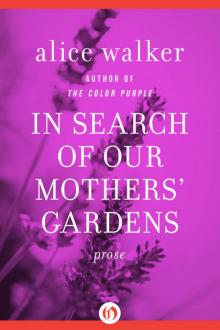 In Search of Our Mothers' Gardens: Prose
In Search of Our Mothers' Gardens: Prose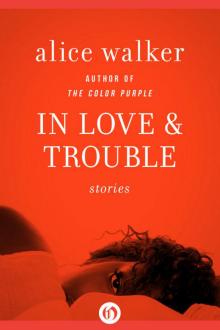 In Love and Trouble: Stories of Black Women: Stories of Black Women
In Love and Trouble: Stories of Black Women: Stories of Black Women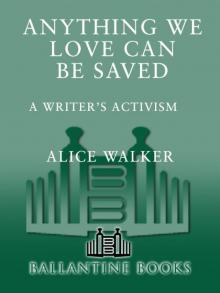 Anything We Love Can Be Saved
Anything We Love Can Be Saved The Color Purple
The Color Purple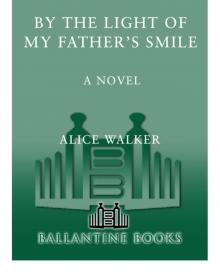 By the Light of My Father's Smile
By the Light of My Father's Smile The Third Life of Grange Copeland
The Third Life of Grange Copeland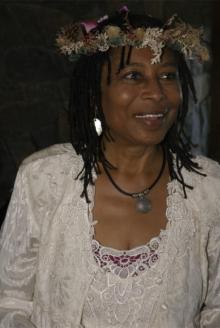 You Can't Keep a Good Woman Down
You Can't Keep a Good Woman Down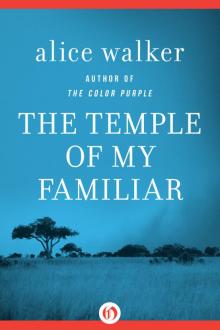 The Temple of My Familiar
The Temple of My Familiar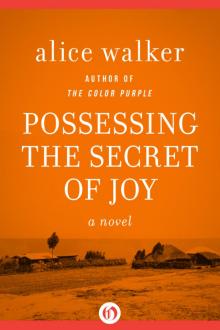 Possessing the Secret of Joy
Possessing the Secret of Joy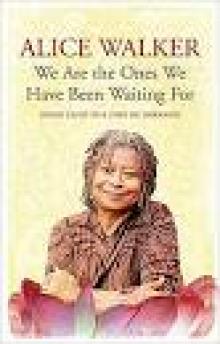 We Are the Ones We Have Been Waiting For
We Are the Ones We Have Been Waiting For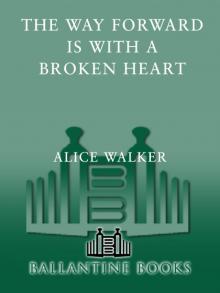 The Way Forward Is With a Broken Heart
The Way Forward Is With a Broken Heart Meridian
Meridian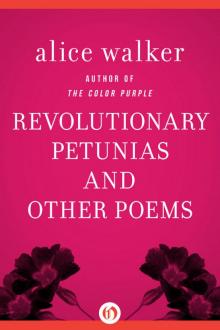 Revolutionary Petunias
Revolutionary Petunias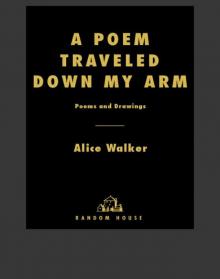 A Poem Traveled Down My Arm
A Poem Traveled Down My Arm Once
Once Horses Make a Landscape Look More Beautiful
Horses Make a Landscape Look More Beautiful Living by the Word
Living by the Word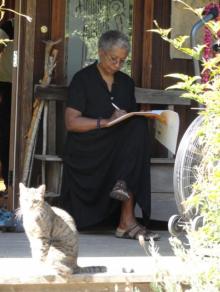 In Love and Trouble
In Love and Trouble The Color Purple Collection
The Color Purple Collection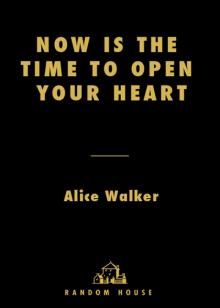 Now Is the Time to Open Your Heart
Now Is the Time to Open Your Heart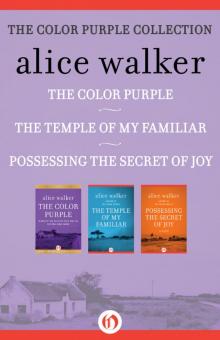 Color Purple Collection
Color Purple Collection Taking the Arrow Out of the Heart
Taking the Arrow Out of the Heart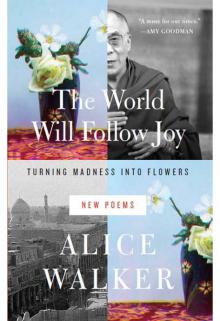 The World Will Follow Joy
The World Will Follow Joy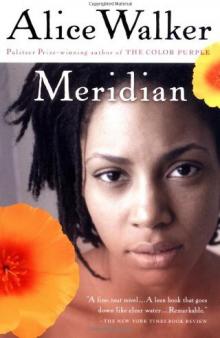 Meridian (1976)
Meridian (1976)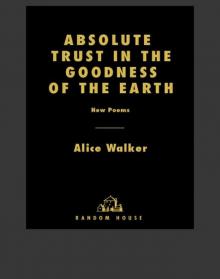 Absolute Trust in the Goodness of the Earth
Absolute Trust in the Goodness of the Earth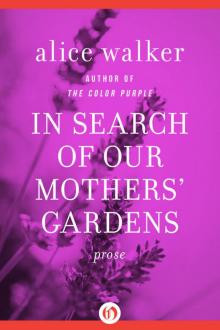 In Search of Our Mothers' Gardens
In Search of Our Mothers' Gardens